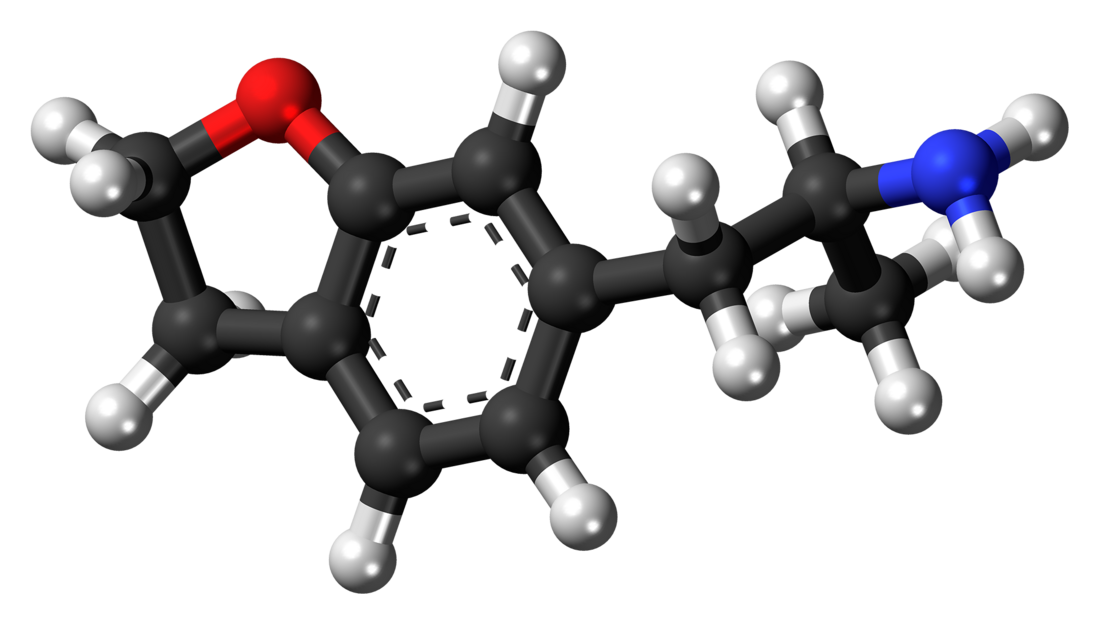Top Qs
Timeline
Chat
Perspective
6-APDB
Stimulant designer drug From Wikipedia, the free encyclopedia
Remove ads
6-APDB, also known as 6-(2-aminopropyl)-2,3-dihydrobenzofuran or as 4-desoxy-MDA, is an entactogen of the phenethylamine, amphetamine, and dihydrobenzofuran families.[1] It is an analogue of MDA where the heterocyclic 4-position oxygen from the 3,4-methylenedioxy ring has been replaced with a methylene bridge.[1] 5-APDB (3-desoxy-MDA) is an analogue of 6-APDB where the 3-position oxygen has been replaced with a methylene instead.[1] 5-APDB was developed by a team led by David E. Nichols at Purdue University as part of their research into non-neurotoxic analogues of MDMA and first described in 1993.[2][3][4][1][5][6]
Remove ads
Interactions
Pharmacology
Pharmacodynamics
In animal drug discrimination studies, 6-APDB fully substitutes for MBDB and MMAI but not for amphetamine or LSD.[1] In vitro, 6-APDB has been shown to inhibit the reuptake of serotonin, dopamine, and norepinephrine with IC50 values of 322 nM, 1,997 nM, and 980 nM, respectively.[1] These values are very similar to those of MDA, but with those for the catecholamines slightly lower in comparison, perhaps more similarly to MDMA.[1] Though 6-APDB does not substitute for amphetamine in rats at the doses used in referenced study, based on its in vitro profile it can be suggested that it may have amphetamine-like effects at higher doses. It also has activities at serotonin receptors.[7]
In subsequent animal studies, 6-APDB produced robust hyperlocomotion and, in drug discrimination tests, fully substituted for MDMA, partially substituted for DOM and cocaine, and failed to substitute for methamphetamine.[8]
Remove ads
Chemistry
6-APDB, also known as 6-(2-aminopropyl)-2,3-dihydrobenzofuran, is a phenethylamine, amphetamine, and dihydrobenzofuran and an analogue of 3,4-methylenedioxyamphetamine (MDA).
Synthesis
The chemical synthesis of 6-APDB has been described.[6]
Analogues
In contrast to 6-APDB, 5-APDB is highly selective for serotonin.[1]
The unsaturated benzofuran derivative 6-APB, or 6-(2-aminopropyl)benzofuran is also known, but the difference in pharmacological effects between 6-APB and 6-APDB is unclear.
History
6-APDB, along with 5-APDB, was described by David E. Nichols and colleagues at Purdue University as an MDMA analogue in 1993.[2][3][4][1][5][6] Subsequently, the non-dihydrogenated benzofurans 5-APB and 6-APB emerged as novel designer drugs in 2010.[4][3][1] Prior to this, 5-APB and 6-APB had been patented and first described by Eli Lilly and Company as serotonin 5-HT2C receptor agonists for potential medical applications in 2000.[2][3][4] 5-APB and 6-APB are often confused with 5-APDB and 6-APDB.[3]
Remove ads
Society and culture
Legal status
United Kingdom
6-APDB is a class B drug in the United Kingdom since June 10, 2013. It is banned by a blanket law on benzofurans and related compounds.[9]
See also
References
External links
Wikiwand - on
Seamless Wikipedia browsing. On steroids.
Remove ads


